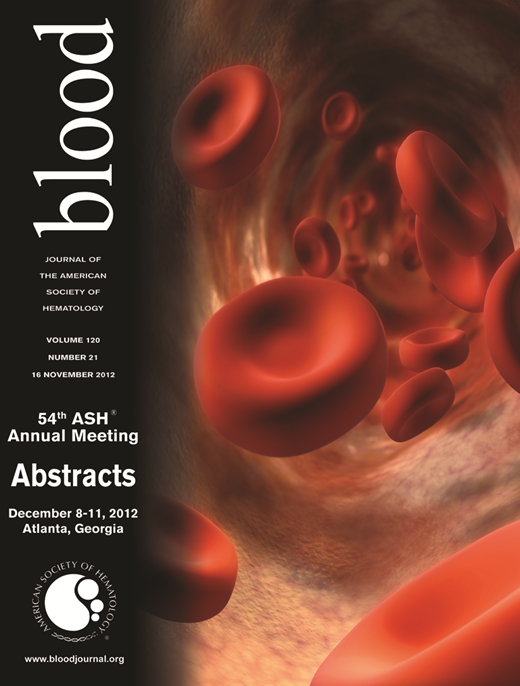Abstract
Abstract 957
Optimal criteria for cord blood (CB) unit selection are unknown. Traditionally, units are matched to the recipient only at human leukocyte antigen (HLA)-A, B antigens, and DRB1 alleles with up to 2 mismatches permitted. Recently, however, a significant association between intermediate resolution HLA-C matching and transplant-related mortality has been reported in single unit CB transplantation (CBT) (Eapen, M., Lancet Oncol, 2011). Moreover, we have recently demonstrated a decreased day 180 grade III-IV acute graft-versus-host disease incidence if the engrafting unit of a double-unit pair is ≥ 4/6 HLA-A, B, DRB1 allele matched to the recipient (Ponce, D., unpublished, 2012). This suggests that CB donor-recipient match criteria should be upgraded to 6 HLA-alleles or higher. However, how to clinically implement higher resolution HLA-matching and how it could affect CB unit selection are not known.
To examine the extent of HLA-mismatch, we analyzed the HLA-match grade of 96 double-unit CB grafts (units 1a and 1b) and the 1–2 back-up units chosen for each transplant at various HLA-match grades. 362 CB units were selected for 95 patients (one patient was transplanted twice) who underwent CBT from 1/1/2009-6/30/2012 for hematologic malignancies. Units were selected based on cryopreserved total nucleated cell (TNC) dose (initially ≥ 1.5, later increased to ' 2.0 × 107/kg), donor-recipient 4–6/6 HLA-A, B antigen, DRB1 allele match, and CB bank. Unit-unit HLA-match was not considered. High-resolution typing for 10 alleles was obtained prospectively, although usually did not influence unit selection.
The median age was 41 years (range 1–69) and the median weight was 65 kilograms (range 10–125). The median cryopreserved TNC/kg × 107 of units 1a and 1b (n = 192) was 2.89 (range 1.53–17.78), and their median donor-recipient HLA-match was 4/6 (range 1–6/6), 5/8 (range 2–8/8), and 6/10 (range 2–9/10) at 6, 8 and 10 HLA-alleles, respectively. The median (range) of 6/6 HLA-A, B antigen, DRB1 allele matched units (n = 9) was 6/6 (3-6/6), 7/8 (5-8/8) and 9/10 (7-9/10) at 6, 8, and 10 allele resolution, respectively. However, 5/6 HLA-A, B antigen, DRB1 allele matched units (n = 90) were a median (range) of 5/6 (2-5/6), 6/8 (3-7/8) and 7/10 (3-9/10) at allele resolution. Moreover, 4/6 HLA-A, B antigen, DRB1 allele matched units (n = 93) were a median (range) of 3/6 (1-4/6), 4/8 (2-6/8) and 5/10 (2-8/10) at allele resolution. We then evaluated how often the use of higher resolution HLA-match criteria would change graft selection to substitute one or both back-up units over units 1a and/or 1b, and the effect on the graft TNC dose (Table). If a cryopreserved TNC/kg ≥ 2.0 × 107 and a better HLA-match were required for either units 1a or 1b to be substituted, the frequency that graft selection would change was up to 38/96 (40%) of transplants for 10 allele HLA-match. The effect on TNC was minimal (≤ 12% reduction in the total graft TNC dose).
Recent data suggest the criteria for CB match should be re-evaluated. However, units currently chosen based on HLA-A, B antigen, DRB1 allele match have a very high degree of mismatch when typed at higher resolution (as low as 3/10 for 5/6 units, and 2/10 for 4/6 units). Adoption of higher match grade criteria will frequently change the selection of the “optimal” graft in both adult and pediatric patients. While both the new lower limit of acceptable HLA-match and how to “trade off” higher resolution HLA-match against TNC dose are unknown, our data suggest that higher resolution HLA-match is possible without significant compromise in graft dose. Ultimately, large studies will be required to understand the impact of higher resolution HLA-match on disease-free survival to further guide clinical practice.
| Match . | N (%) Grafts That Would Change . | For Grafts That Would Change . | |
|---|---|---|---|
| Grade . | Median (Range) Cryo. TNC: Original Choice for Graft (Larger/Smaller) . | Median (Range) Cryo. TNC: New Choice Based on Higher Match Grade(Larger/Smaller) . | |
| 6 allele: | 26/96 (27%) | 3.7 (2.1-12.0)/2.7 (1.9-6.6) | 3.0 (2.0-8.0)/2.6 (2.0-6.6) |
| A, B, DRB1 | |||
| 8 allele: | 33/96 (34%) | 3.6 (1.9-10.5)/2.7 (1.9-6.4) | 3.2 (2.0-7.6)/2.5 (1.9-6.8) |
| A, B, C, DRB1 | |||
| 10 allele: | 38/96 (40%) | 3.6 (2.1-10.5)/2.6 (1.6-6.4) | 3.1 (2.0-8.7)/2.5 (1.6-7.6) |
| A, B, C, DRB1, DQ | |||
| Match . | N (%) Grafts That Would Change . | For Grafts That Would Change . | |
|---|---|---|---|
| Grade . | Median (Range) Cryo. TNC: Original Choice for Graft (Larger/Smaller) . | Median (Range) Cryo. TNC: New Choice Based on Higher Match Grade(Larger/Smaller) . | |
| 6 allele: | 26/96 (27%) | 3.7 (2.1-12.0)/2.7 (1.9-6.6) | 3.0 (2.0-8.0)/2.6 (2.0-6.6) |
| A, B, DRB1 | |||
| 8 allele: | 33/96 (34%) | 3.6 (1.9-10.5)/2.7 (1.9-6.4) | 3.2 (2.0-7.6)/2.5 (1.9-6.8) |
| A, B, C, DRB1 | |||
| 10 allele: | 38/96 (40%) | 3.6 (2.1-10.5)/2.6 (1.6-6.4) | 3.1 (2.0-8.7)/2.5 (1.6-7.6) |
| A, B, C, DRB1, DQ | |||
Giralt:Celgene: Honoraria, Research Funding.
Author notes
Asterisk with author names denotes non-ASH members.

